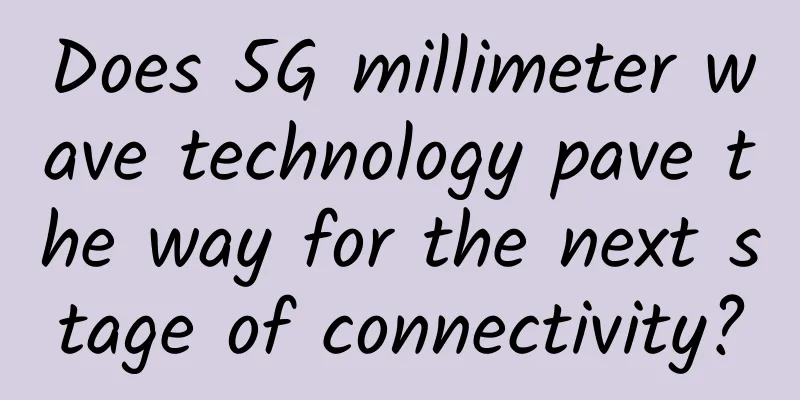5G and the Future of Commercial Security Surveillance

|
Many commercial security surveillance networks are connected with mobile wireless because it provides greater location flexibility and better data security than Wi-Fi. Because mobile networks are ubiquitous, they are ideal for large-scale outdoor deployments. In addition, unlike Wi-Fi systems, mobile operators encrypt their traffic, so video streams are protected from hacker attacks. As the world moves from 4G mobile technology to 5G technology, video surveillance applications will usher in a performance revolution. Only 2% of surveillance cameras today use cellular connections, mainly because 4G networks do not provide the speeds required to efficiently transmit video. Whereas 4G networks can struggle when there are dozens of cameras in a system, 5G makes it possible to deploy thousands of cameras in a system, all of which can stream UHD video in real time. Because 5G networks can transmit large amounts of data over a wide area at lightning speeds, it will also revolutionize analytics and machine learning, resulting in new capabilities and business applications. According to Gartner, outdoor surveillance cameras are the largest category of Internet of Things (IoT) solutions sold between 2019 and 2022. The number of outdoor 5G surveillance cameras will reach 11.2 million units in 2022, four times the number in 2020. So what will these 5G-enabled cameras do? Here are some examples. Faster data downloads5G networks are dramatically increasing the amount of data that can be transmitted and downloaded, which is changing the security possibilities. One security camera company that specializes in monitoring construction sites estimates that a full day of 4K security video from a fixed camera or drone can be downloaded over a 5G network in less than five minutes; using a 4G connection, the same transmission would take about two hours. Thus, by transmitting images in near real time, the camera's capture and transmission system can work more efficiently. Automatic monitoring5G networks have latency of just 1-4ms, and dedicated networks have even lower latency. This almost complete elimination of latency will enable real-time monitoring, allowing security personnel to identify suspects and respond more quickly to incidents and emergencies. When combined with real-time analytics, there is also greater scope for automation, meaning that cameras can detect events and communicate with other systems to initiate a response, such as sending an alert notification or activating an alarm. Artificial Intelligence and Data Analytics5G has achieved a qualitative leap in both speed and throughput, which greatly expands the scope of video analytics and artificial intelligence. 5G supports 3D facial recognition technology, which can work in low-light or even dark areas, helping to identify criminals and make cities and other urban areas safer. By integrating behavioral analysis, serious incidents such as possible shooters or terrorists can be identified. Mobile video surveillance5G also offers enhanced mobile broadband (eMBB), which supports connection speeds 10-20 times faster than 4G networks. eMBB will support high-definition video streaming from vehicles traveling at speeds of up to 300 miles per hour, allowing, for example, a police officer responding to an emergency to live stream detailed video feeds from her body camera while simultaneously downloading relevant information about the neighborhood, threat levels, or potential suspects. Smart CityConnected cameras can play a role in improving how cities function. For example, AI-enabled cameras are ideal for traffic monitoring, whether it’s preventing speeding and dangerous driving or regulating vehicle flow. Citywide surveillance solutions also have the potential to improve safety and deter criminal behavior or antisocial activity in parks and other vulnerable spaces. Additionally, drones equipped with ultra-high-definition cameras can serve as the eyes and ears of rescuers during emergency responses such as wildfires or natural disasters. These are just some examples of security surveillance applications connected by powerful 5G networks. 5G is coming. Companies and organizations looking to benefit from this transformative technology should act now, and one of the first areas to address is connectivity. From video surveillance cameras to IoT devices and advanced sensors, reliable and resilient connectivity is the glue that ties everything together. |
<<: About remote procedure call gRPC
>>: A Visual Guide to Kubernetes Networking
Recommend
IoT connections to grow 400% in four years
IoT connections are expected to reach 142 million...
Blockchain subverts the underlying architecture of the financial industry and opens a new era of value interconnection
Blockchain is essentially a decentralized databas...
Performance Agreement: API Rate Limit
Rate limiting is a key control mechanism used to ...
Analyzing the technology behind short videos and reopening the battle against CDN
If the live streaming industry was booming in 201...
I just pressed 666 and something magical happened to the computer...
[[394490]] There is a classic question in the com...
5G mobile phones will be released on a large scale soon: 5G network traffic charging method is exposed!
China Unicom will carry out 5G pilot projects in ...
Relationship-aware routing and global traffic scheduling · SOSP 2019
[[345832]] "Read the Papers" is a serie...
How are 5G standards formulated? What is the voice of Chinese companies?
The 5G standard is composed of many technologies,...
How is vmiss? Simple test of vmiss Hong Kong VPS (CN-Hong Kong-BGP)
At the beginning of last month, we purchased the ...
LiCloud National Day Promotion: Hong Kong dedicated server first month from $19.99, Hong Kong high bandwidth VPS annual payment from $17
LiCloud.io has launched this year's National ...
IBM acquires Red Hat. Will it be its rival, Google or Huawei? Let's wait and see.
Recently, IBM completed the acquisition of all is...
SpartanHost Seattle E5 KVM restock, $8/month-2GB/30G NVMe/3TB/10G bandwidth/20G high defense
SpartanHost has restocked the DDoS Protected SSD ...
5G co-construction and sharing: the simple "saving money" mentality is not advisable
On June 6, after China issued 5G commercial licen...
IDC: Global edge computing market will reach $250.6 billion in 2024
Industry data: Gartner conducted a survey and int...
SD-WAN: 10 essential considerations organizations need to weigh
SD-WAN is one of the hottest new network technolo...









